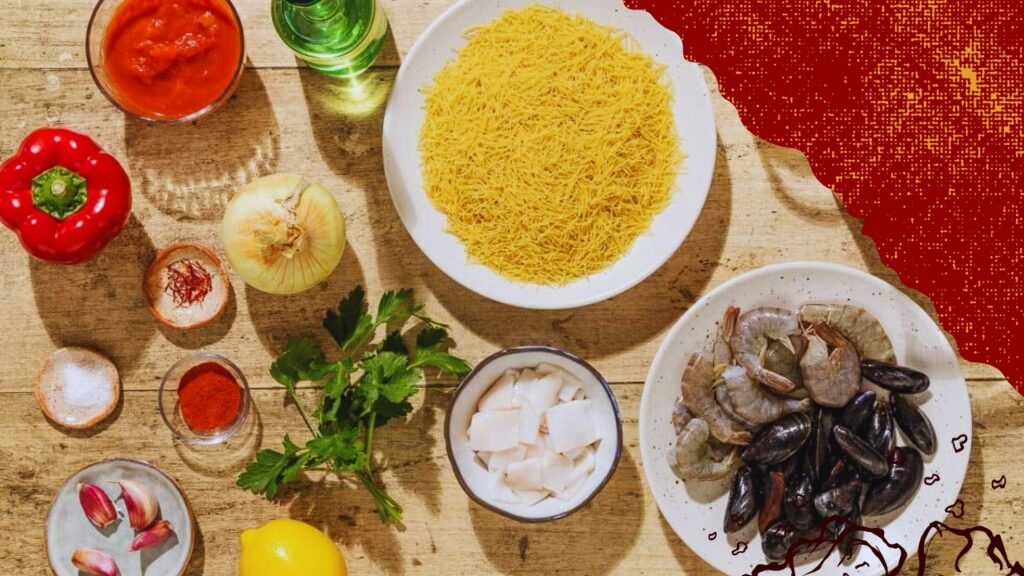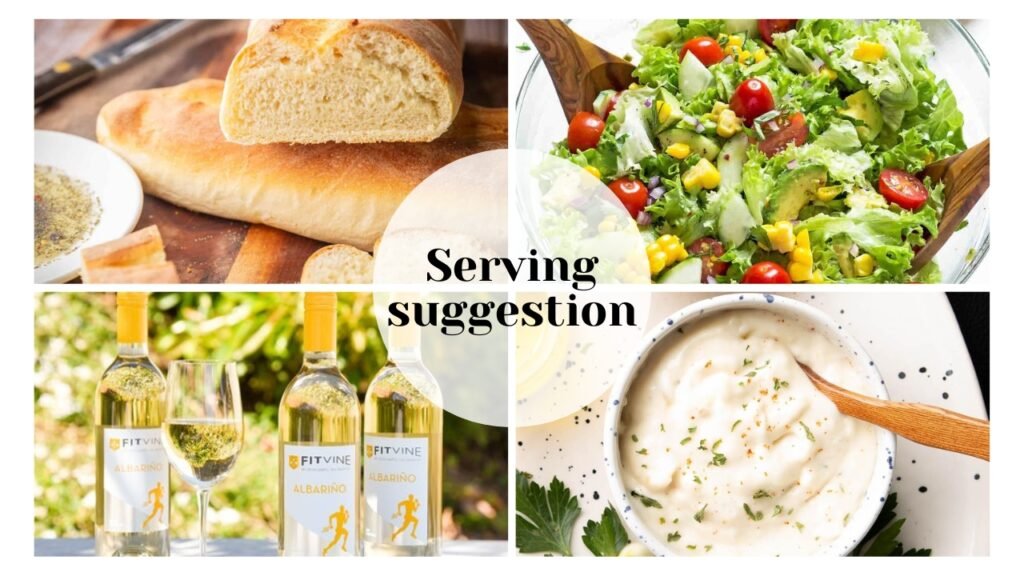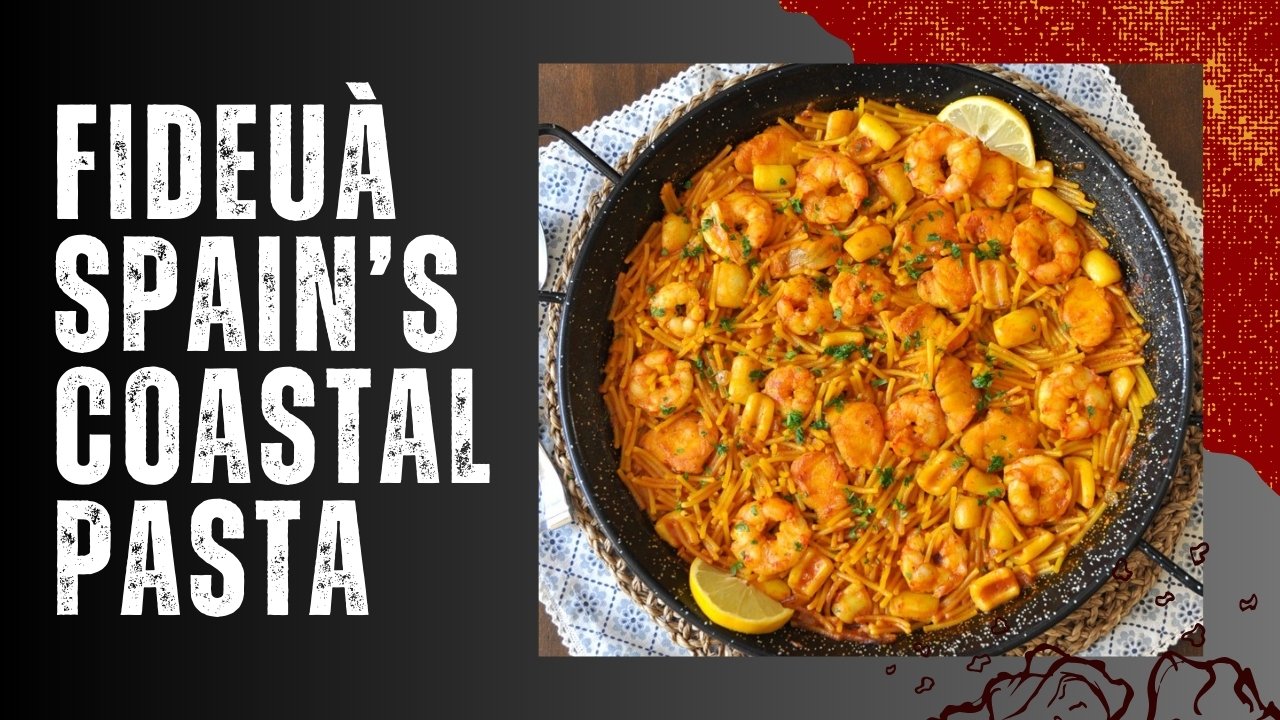Fideuà is a seafood dish made with toasted noodles. It has a beloved and sea-sweet flavor. It is mostly referred to as a Noodles paella. It is defined as thin pasta noodles and uses easy-to-find ingredients. It has many similarities with paella; they have flavored broth in a wide, shallow pan. When we toast the noodles, it gives a nutty and caramelized flavour and a difference in texture if we compare it with paella.
Fideuà has seafood options, whereas paella has many variations. Seafood includes monkfish, shrimp, mussels, and squid. It is mostly seasoned with paprika. The dish requires a flat pan similar to a paella pan. It has such a distinct flavour.
In this blog post, you will learn how to develop the authentic taste of fideuà in your kitchen. It would be so exciting. Let’s get started!
Table of Contents
What is Fideuà?
Fideuà is a traditional Spanish seafood dish. It originated on the coast of Valencia. It is a cousin of paella. These are the noodles toasted in the olive oil and then cooked in the flavourful seafood or fish stock. Fishermen around Gandia and Valencia invented this dish. It has some similar techniques to paella. This dish is special for many reasons.
According to the popular legend, the dish was created by accident by a cook on a fishing boat. The captain was fond of the arroz a banda, a rice dish, but he had a crew, which shows that they are not enough to eat. They used noodles instead of rice. When they tried the noodles, it was successful. And now it is very popular all over Spain.
Essential Ingredients
- Fideua (short, thin pasta)
- Seafood mix
- Seafood broth (caldo de pescado)
- Saffron threads
- Olive oil (extra virgin)

Optional & Substitutions
- Vegan fideuà Chicken fideuà
- Gluten-free
- pinch of turmeric for color
- Alioli or homemade garlic mayonnaise
Step-by-Step Instructions
1. Toast the Noodles
- Heat a wide pan and add 2–3 tablespoons of olive oil. You can use a large skillet over medium heat.
- Add the fideos and stir constantly. Wait for 3–4 minutes until their color turns a light golden.
- After this, remove the noodles from the pan and set aside.
2. Make the Sofrito (Onion, Garlic, Tomato)
- In the same pan, add a splash more olive oil if needed.
- Add a chopped onion and sauté it over medium heat. It takes about 5 minutes to get soft.
- Add minced garlic and cook for 30 seconds until it is fragrant. Add grated or finely chopped tomatoes, cooking until the mixture thickens and the liquid evaporates. This forms the rich flavor base.
3. Bloom the Spices
- You have to sprinkle sweet paprika over the sofrito and stir quickly to release its aroma.
- It takes 20-30 seconds.
- Add saffron threads by crushing them lightly between your fingers, and stir to mix.
4. Cook the Seafood
- Add squid or calamari rings first, cooking for 1–2 minutes.
- Add prawns or shrimp and sear for 1 minute per side.
- Remove the prawns and set aside to avoid overcooking.
5. Add Stock & Noodles
- Pour hot seafood stock into the pan with the sofrito and squid.
- Bring to a gentle boil, then add the toasted noodles, spreading them evenly across the surface.
6. Create the Socarrat
- Once the liquid has mostly absorbed and the noodles are tender, increase the heat for the last 1–2 minutes.
- There is a cracking sound when it gets caramelized into socarrat.
- Please don’t leave it too long!
7. Rest & Serve with Aioli and Lemon
- Remove the pan from the heat and arrange the reserved prawns on top.
- Rest the food for 3–5 minutes so the flavors settle.
- Serve on top with lemon wedges and a dollop of garlicky aioli.
“Sobrasada’s rich, smoky flavor can transform even the simplest dish into a Spanish delicacy — spread it, cook it, or melt it into pure bliss.”
Tips for Perfect Fideuà
Pan size
Use a wide or shallow paella pan or skillet. It helps the noodles cook evenly. It is the key to getting that delicious socarrat.
Stock temperature
Always add hot seafood stock. Cold stock drops the cooking temperature, making the noodles cook unevenly and turning them mushy. Keep the stock simmering in a separate pot so it’s ready when you need it.
Avoid soggy noodles
Use the correct ratio of stock to noodles — about 3 parts stock to 1 part noodles by volume. Cook uncovered and do not stir after adding the noodles.
Listening for the socarrat crackle
In the last 1–2 minutes of cooking, raise the heat slightly. A crackling sound means the bottom is caramelizing, that’s the socarrat.
Variations to Try
All-Seafood Fideuà
If you are stuck to a seafood option, a mix of prawns, squid, mussels, and clams works beautifully. The flavor will be lighter and more focused on the natural sweetness of the seafood.
Mixed Meat & Seafood
You can substitute seafood with meat, chicken, or rabbit with prawns, squid, and mussels. The meat adds depth and richness, making the dish more filling. Some chorizo or sausage also adds depth.
Vegan Fideuà
For a meatless option, you can add a variety of vegetables like mushrooms (oyster, shiitake, or king oyster), artichoke hearts, zucchini, and roasted red peppers.
Black Fideuà
You can add black color for a rich flavour. It is typically made with squid or cuttlefish. It is the most popular choice. These noodles will have a black glossy color.
Serving Suggestions
- Crusty bread
- Aioli
- Green salad

Best wines to pair
- white wine
- Albariño
- Verdejo
- Navarra or Rioja
Conclusion
Fideuà is more than just a recipe; it is a taste of Spain. It brings the coastline to your kitchen. With toasted noodles, rich seafood broth, and that irresistible socarrat, every bite feels like a seaside holiday.
Fideuà is a simple dish. You can make it at festivals or on different occasions. Every variation gives its favourite taste. Please bring this to your table, it is a unique taste of pasta. You can have these noodles whether you are a fan of seafood or vegan. Share your thoughts and reviews after making this. Must share Fideuà with family, friends, and your loved ones because it is a dish of togetherness!










